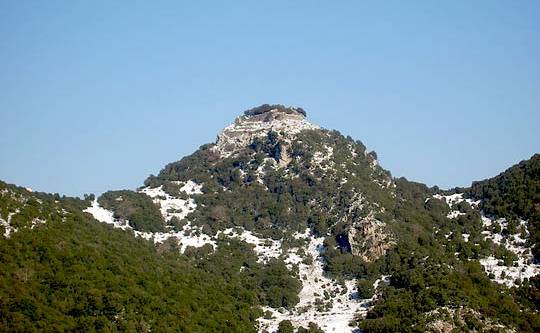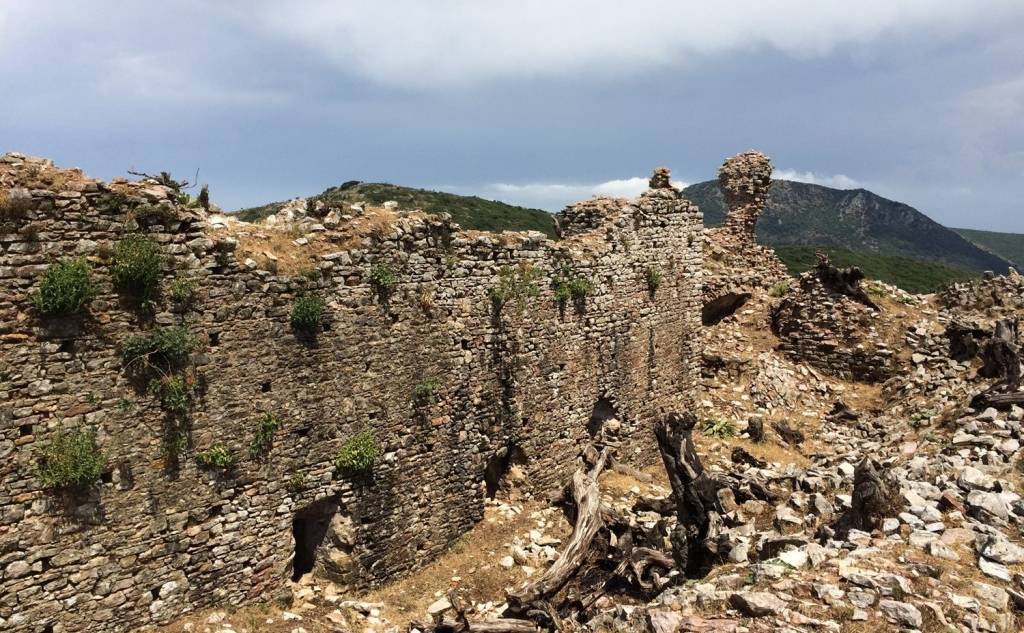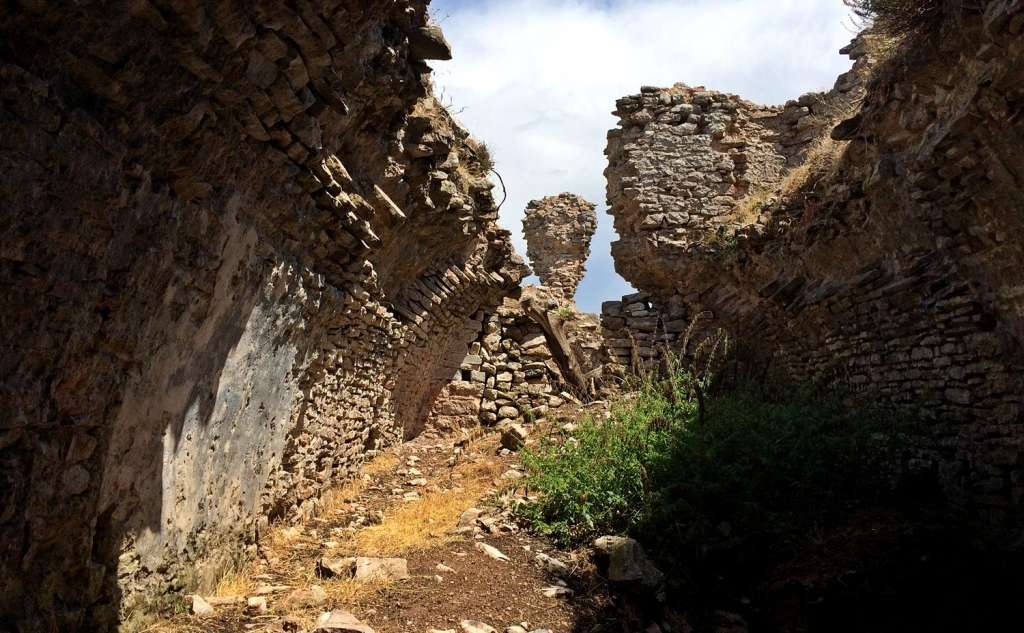Saflauros' Castle
The Frankish Castle of Saflauros, also known as the Castle of Lantzounatos, dominates the top of a rock (at an altitude of 850 meters), near the village of Lantzounatos, which is 28 km from Kyparissia. In ancient times, the settlement was part of the kingdom of Nestor. The Castle is considered a fortress of the Byzantine-Post-Byzantine period and was built in the late 13th or early 14th century. In general, it has several similarities with the Castle of Mila and, rather, it was an observation post of the passage to and from Kyparissia. It is identified, without absolute certainty, with the Castle of the Savior or Saint Sauver. Its name must have come from San Flauro, which means Saint Floros. Its first owner is mentioned, in 1297, Nicolas Le Maure, the same one who had imprisoned Margarita of the Villehardouins in Chlemoutsi, in 1315.
It is believed that the Castle was one of the most important in Messinia for the Byzantines, as it is reported that Constantine Palaiologos took it from his brother Theodore II, shortly before he was proclaimed Despot in the Despotate of Mystras, in 1443. Between 1460 and 1469, the Castle was under Turkish administration and during this period it probably suffered most of its damage.
Saflauros Castle, although relatively small in size, had a wonderful architecture. Its gate was on its south side, while three openings in its western wall have holes for railings. This fact indicates its use as a prison in an unknown time. The Castle extends on two levels, of which the second, (the inner courtyard), is four-sided in plan with four rectangular towers. The Castle is built of mudstone without the insertion of bricks. Inside, a long, vaulted building is preserved, while the outer precinct has collapsed for the most part. To the right, there is a square building that communicated with the rest of the Castle through a vaulted tunnel, the entrance of which survives to this day. Finally, there were two even smaller entrances, where the locals call "Troupa tou Arapis" (Arapis’ hole). They are, however, quite small and low. The first led to the small, vaulted hall and the second, through an underground gallery, led to the basement of the Castle.






